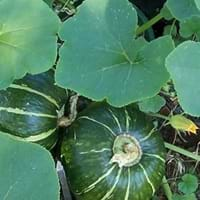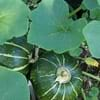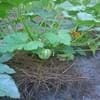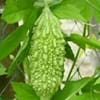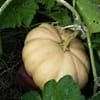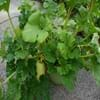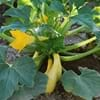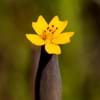What is
Life Span
Annual
Perennial
Type
Vegetable
Bulb or Corm or Tuber
Origin
Central America, Mexico, North America
South America, Argentina
Types
Neck, Really Big Hybrid, Waltham
Not Available
Habitat
Cultivated Beds
Temperate Regions
USDA Hardiness Zone
9-11
5-9
AHS Heat Zone
12-1
9-1
Sunset Zone
A1, A2, A3, H1, H2, 1a, 1b, 2a, 2b, 3a, 3b, 4, 5, 6, 7, 8, 9, 10, 11, 12, 13, 14, 15, 16, 17, 18, 19, 20, 21, 22, 23, 24
21,22
Habit
Prostrate/Trailing
Clump-Forming
Information
Plant Size
Minimum Height
7.62 cm
99+
10.20 cm
99+
Minimum Width
50.80 cm
99+
5.10 cm
99+
Plant Color
Flower Color
Yellow, Gold
Light Blue, Light Purple, Silver, Sky Blue
Flower Color Modifier
Bicolor
Bicolor
Fruit Color
Peach, Tan
Not Available
Leaf Color in Spring
Green, Dark Green
Green, Light Green, Gray Green
Leaf Color in Summer
Green, Dark Green
Light Green
Leaf Color in Fall
Green, Dark Green, Yellow green
Several shades of Green
Leaf Color in Winter
Not Available
Light Green
Shape
Leaf Shape
Heart-shaped
Grass like
Thorns
No
No
Season
Plant Season
Summer, Fall
Spring
Growing Conditions
Sunlight
Full Sun
Full Sun, Partial Sun, Partial shade
Growth Rate
Very Fast
Medium
Type of Soil
Loam
Clay, Loam, Sand
The pH of Soil
Neutral
Acidic, Neutral, Alkaline
Soil Drainage
Well drained
Well drained
Bloom Time
Early Summer, Indeterminate
Early Spring, Spring, Late Winter
Repeat Bloomer
Yes
No
Tolerances
Drought
Drought
Care
Where to Plant?
Container, Ground, Pot
Container, Ground
How to Plant?
Seedlings
By dividing rhizomes, tubers
Plant Maintenance
Medium
Medium
Watering Plants
Watering Requirements
Prefer drip-irrigation instead of Over-head watering, Requires regular watering
Average Water Needs, Do Not over Water, Requires regular watering
In Summer
Lots of watering
Lots of watering
In Spring
Moderate
Moderate
In Winter
Average Water
Average Water
Soil
Soil pH
Neutral
Acidic, Neutral, Alkaline
Soil Type
Loam
Clay, Loam, Sand
Soil Drainage Capacity
Well drained
Well drained
Sun Exposure
Full Sun
Full Sun, Partial Sun, Partial shade
Pruning
Cut out old flower stalks, Prune after flowering, Remove dead or diseased plant parts, Remove the old foliage
Remove damaged leaves, Remove dead branches, Remove dead leaves
Fertilizers
Apply 10-10-10 amount, Balanced organic fertilizer, iron-rich fertilizer, Nitrogen, Phosphate
All-Purpose Liquid Fertilizer
Pests and Diseases
Bacteria wilt, Bacterial leaf spot, Blight, Cucumber beetles, Cutworms, Dry root rot, Fusarium leaf spot, Soft scales
Slugs, Snails
Plant Tolerance
Full Sun, Shade areas, Shallow soil
Drought
Facts
Flowers
Showy
Showy
Flower Petal Number
Single
Single
Fruits
Showy Fruit
Yes
No
Edible Fruit
Yes
No
Fragrance
Fragrant Flower
Yes
Yes
Fragrant Fruit
No
No
Fragrant Leaf
No
Yes
Fragrant Bark/Stem
No
No
Showy Foliage
No
No
Showy Bark
No
No
Foliage Texture
Coarse
Medium
Foliage Sheen
Matte
Matte
Evergreen
No
No
Invasive
No
No
Self-Sowing
No
Yes
Attracts
Ants, Bees
Bees, Birds, Hummingbirds
Allergy
Dermatitis
Not Available
Benefits
Uses
Aesthetic Uses
Not Used For Aesthetic Purpose
Showy Purposes
Beauty Benefits
Glowing Skin, Good for skin and hair
Not Available
Edible Uses
Yes
No
Environmental Uses
Air purification
Air purification
Plant Benefits
Medicinal Uses
Antiasthamatic, anti-cancer, Cardiovascular problems, cholesterol-lowering, constipation, Diabetes, Fiber, High blood pressure, High cholestrol, Immunity, Manganese, Obesity, Vitamin A, Vitamin C, Vitamin E
No Medicinal Use
Part of Plant Used
Flowers, Fruits, Leaves, Seeds
Flowers
Other Uses
For making oil, Used As Food
Not Available
Used As Indoor Plant
Yes
Yes
Used As Outdoor Plant
Yes
Yes
Garden Design
Edible, Herb / Vegetable, Vine
Container, Lawns and Turf, Mixed Border, Rock Garden / Wall, Wildflower
Scientific Name
Botanical Name
CUCURBITA pepo 'White Crown of Thorns'
Ipheion uniflorum
Common Name
Winter Squash
Spring Starflower, Springstar
In Hindi
कोंहड़ा
Spring Starflower
In German
Winter squash
Frühling Borretsch
In French
courges d'hiver
Spring Starflower
In Spanish
calabaza de invierno
primavera Flor de estrella
In Greek
σκουός χειμώνα
άνοιξη starflower
In Portuguese
abóbora
primavera Starflower
In Polish
dynia
Wiosna Starflower
In Latin
cucurbita
Spring Starflower
Classification
Kingdom
Plantae
Plantae
Phylum
Magnoliophyta
Magnoliophyta
Class
Magnoliopsida
Lilopsida
Order
Violales
Asparagales
Family
Cucurbitaceae
Liliaceae
Genus
Cucurbita
Ipheion
Clade
Angiosperms, Eudicots, Rosids
Angiosperms, Monocots
Tribe
Not Available
Gilliesieae
Subfamily
Papilionoideae
Allioideae
Number of Species
27
99+
Not Available
|
||
|
||
|
